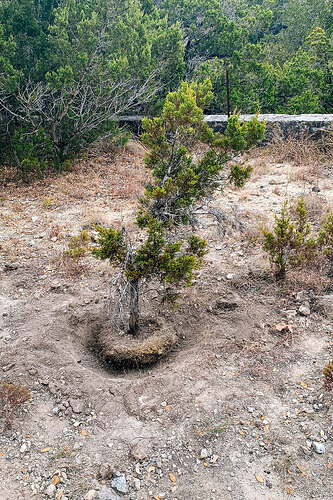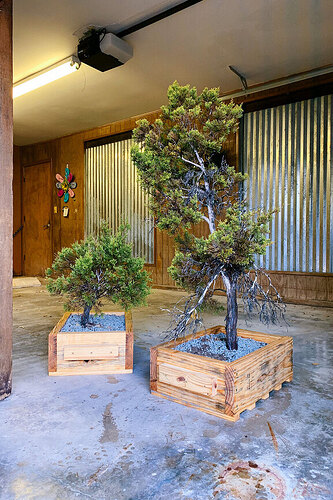I love this topic. Here’s my experience.
I live near Austin, TX—Ashe Junipers are abundant. I was discouraged from collecting these trees a few years ago, told it’s difficult to do successfully and perhaps as difficult to transition them to bonsai soil and containers. But I knew it was possible because members of our club have them and there’s at least one here in the Texas State Bonsai Exhibit. I feel like I’m on a quasi-mission to have Ashe Juniper yamadori in my collection, more focused on getting them in bonsai soil and containers, with mature growth. I’m less concerned about styling until then.
In January of 2019 I collected three, two of which are alive and well today. In January of 2020 I collected four, all of which are still with me. All seven trees were collected with a significant root ball, ample field soil, and packed in grow boxes with pumice. The only tree that died is the one I packed in shale and bark because I ran out of pumice.
Here’s an Instagram post documenting that first dig (2019).
And here’s a couple pictures of last year’s dig (2020).
Once collected I found them a mostly shaded spot in the yard. I set up an automatic mister system that sprayed them three or four times a day for about a minute each time. I misted a couple more times in the evenings when temperatures got into the 90s/100s. I stopped misting in the Fall. I watered when the pumice was noticeably dry an inch below the surface.
I’ve only begun to transition one of the trees to bonsai soil. It stayed one full year in the pumice and then last Spring (2020) I replaced just half the field soil with bonsai soil. I’m undecided whether I will do the other half this Spring.
I’m not suggesting this is the only way to do it, it’s just how I’ve had success—and I hesitate to even call this success. Success to me is getting these trees thriving in bonsai soil (no field soil) and bonsai containers, pushing mature growth.



